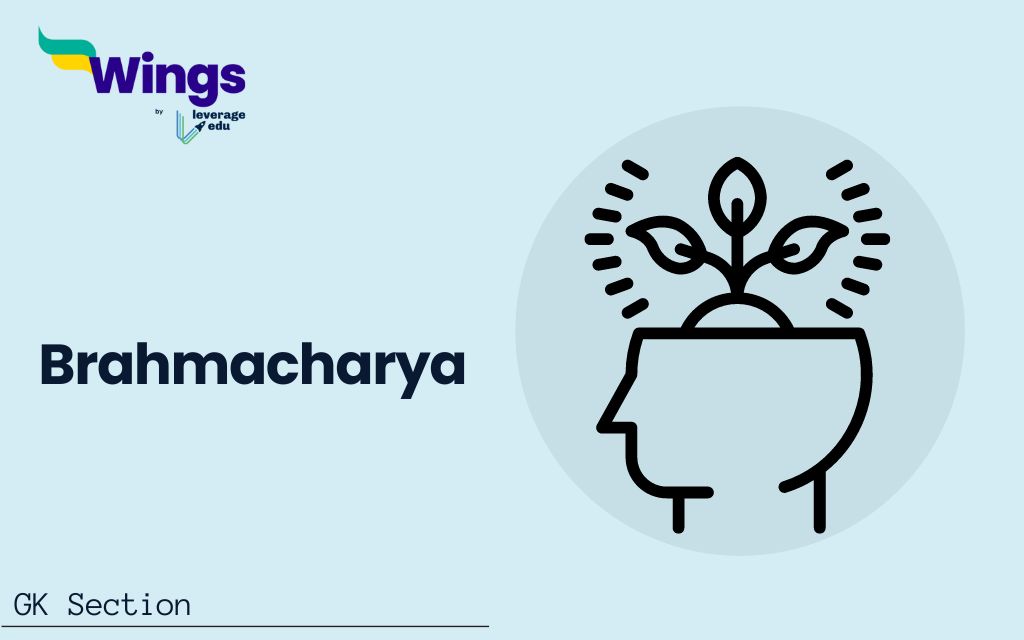Brahmacharya is a concept in Indian religion that means ‘on the path’. Brahmacharya is defined as the practice of controlling one’s senses in order to achieve liberation. It is the first of four ashramas in human life, which lasts from childhood to twenty-five years of age. This was a very important topic in ancient times during Hinduism. In this article, we will talk about Brahmacharya and its importance in ancient times. This concept would also be useful in the art and culture sections of numerous competitive exams, including UPSC and SSC. Continue reading to increase your understanding and learn more about it.
Contents
What is Brahmacharya?
Brahmacharya is a fundamental principle in Hinduism and the yogic tradition. It is one of the five yamas mentioned in Yoga Sutras written by Sage Patanjali. This term originated from two Sanskrit words: “Brahman,” which means Supreme Reality, and “Charya,” which refers to behaviour. Thus, Brahmacharya means “behaviour that leads to Brahman”.
Also Read: 25+ Lesser Known Scientific Facts in Hinduism
Interpretation of Brahmacharya
Brahmacharya can be understood in a variety of ways. People study it differently depending on their point of view.
- In many cultures, Brahmacharya is viewed as celibacy. It means staying away from any type of sexual activity. Avoiding sexual activity helps monks grow spiritually while maintaining mental and physical purity.
- Brahmacharya means to control all forms of physical pleasure. It involves avoiding overindulgence in sensory experiences, whether they are food, entertainment, or other pleasures.
- Brahmacharya includes saving one’s energy and directing it towards spiritual development. This involves avoiding any distractions that drain your physical and mental energy.
- Beyond the physical domains, Brahmacharya involves the purity of ideas, speech and action. It encourages a a positive outlook on life and avoiding negative thoughts.
Eight Rules of Brahmacharya
The practice of BRahmacharya revolves majorly around celibacy and self-control. It has a set of principles that are designed to guide one’s behaviour. Here are eight common rules that are associated with Brahmacharya.
- Control of sexual desire: This states one to maintain celibacy or engage in sexual activities only within the bounds of marriage. It is a way to maintain the purity of the soul by avoiding lustful and negative thoughts.
- Moderation in eating: Eating a balanced diet without overindulging in it and avoid stimulate the senses excessively is another rule of practising Brahmacharya.
- Mindfulness in Speech and Action: One should speak the truth and avoid any kind of gossip. Ensuring that your actions and speech do not harm others is a major principle.
- Discipline in Daily Routine: Following a consistent daily routine can help to maximize productivity by enhancing personal and spiritual development.
- Control of Senses: Practicing control; over the five senses (sight, hearing, touch, taste, and smell) is also a part of practising Brahmacharya.
- Regular Practice of Meditation and Yoga: Engaging in meditation and yoga daily helps to calm our senses, reduce stress and cultivate inner peace. to maintain physical health and control the mind and senses.
- Company of the wise: Spending time in the company of spiritually wise people can inspire and uplift you. Avoid people and environments that encourage negative thoughts.
- Selfless Service and Charity: Engaging in selfless services without expecting anything in return leads to purity of heart and mind.
Application of Brahmacharya in Daily Life
Brahmacharya is a concept that can be used in real-life situations. When applied with dedication, it can lead to spiritual improvement.
- Monks practise Brahmacharya in its strictest form, which includes celibacy.
- For individuals who have not entered the monastic life, Brahmacharya is all about foods that self-control.
- It is about being aware of one’s activities and using one’s energy effectively.
- This may also mean concentrating on one’s duties and responsibilities with a clear mind.
Also Read: Difference Between Buddhism and Hinduism
Benefits of Practicing Brahmacharya
Practising Brahmacharya has both physical and mental benefits. We will discuss some of the benefits of this ashrama in the following pointers.
- Brahmacharya practice can promote physical health by avoiding overindulgence in activities that can contribute to health problems.
- It encourages a balanced and healthy lifestyle.
- Controlling your desires allows you to gain more mental clarity and focus.
- Brahmacharya reduces stress and promotes a peaceful mind.
- Brahmacharya is fundamentally about spiritual development, which improves meditation, increases awareness, and brings one closer to self-realization.
Modern Challenges of Brahmacharya
Brahmacharya is an important part of meditation and yoga. Sexual energy is strong and, when directed upwards, can lead to spiritual development. Yogis often use practices such as pranayama, an aspect of yoga and meditation, to shift sexual energy and use it for spiritual advancement.
- In modern times, Brahmacharya might be difficult to practise.
- As this world is full of sensory temptations, people focus on moderation rather than complete abstinence.
- The core principle of Brahmacharya is to live a life of self-control and mindfulness, directing one’s energies towards personal development and the well-being of others.
Brahmacharya is a broad concept that extends beyond celibacy. It is about living a pure life, which promotes physical health, mental clarity, and spiritual progress. Whether a monk or a householder, practicing Brahmacharya can provide several benefits and help one live a more balanced and fulfilled life.
Related Posts
| 10 Golden Teachings of Swami Vivekananda | Sister Nivedita: Biography, Role & More |
| Who Is The Founder Of Jainism? | Jainism Philosophy : Philosophy and Literature |
| Types of Vedas: Important Features & Details | Vedic Period: A Sacred Chapter of Indian History |
| How to Prepare History for UPSC? | Adi Shankaracharya: Life, Work and Philosophy |
FAQs
Brahmacharya is a concept in Indian religion which means ‘on the path’. Brahmacharya is defined as the practice of controlling one’s senses in order to achieve liberation. It is the first of four ashramas in human life
The four ashramas of human life are Brahmacharya, Gṛhastha, Vanaprastha, and Sannyasa.
It is the first of four ashramas in human life, which lasts from childhood to twenty-five years of age.
This was all about the “Brahmacharya”. For more such informative blogs, check out our UPSC Exams Section and Study Material Section, or you can learn more about us by visiting our Indian exams page
 One app for all your study abroad needs
One app for all your study abroad needs














